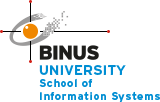Why Multi-Factor Authentication is Essential for Online Security

In today’s digital landscape, cyber threats are more prevalent and sophisticated than ever before. Hackers employ various tactics such as phishing, credential stuffing, and brute force attacks to steal login credentials, compromise accounts, and access sensitive data. Relying solely on passwords is no longer an effective security measure, as many users tend to reuse weak or predictable passwords across multiple platforms. A single data breach can expose millions of passwords, which hackers can exploit to access personal, financial, and corporate accounts. This is where multi-factor authentication (MFA) becomes a crucial security measure, providing an extra layer of protection that significantly reduces the risk of unauthorized access.
MFA is a security process that requires users to verify their identity using multiple authentication factors before they can access an account or system. These authentication factors typically fall into three categories: something you know (passwords, PINs, or security questions), something you have (a smartphone, authentication app, or hardware security key), and something you are (biometric data such as fingerprints, facial recognition, or voice recognition). By requiring at least two of these factors, MFA makes it exponentially more difficult for cybercriminals to gain access to an account, even if they have obtained a user’s password. One of the most significant advantages of MFA is its ability to prevent account takeovers. Data breaches are becoming more common, with millions of passwords leaked on the dark web every year. Cybercriminals often use these stolen credentials to gain access to other accounts, assuming that many users reuse passwords across multiple services. This technique, known as credential stuffing, is a major security risk. Without MFA, a compromised password could allow an attacker to take over a user’s email, banking, or social media accounts. However, with MFA enabled, an additional verification step such as a one-time password (OTP) sent to a registered device creates a crucial security barrier that unauthorized users cannot bypass.
MFA is particularly critical for protecting financial transactions, corporate data, and sensitive personal information. Banks, healthcare institutions, government agencies, and enterprises handling confidential data rely on MFA to ensure that only authorized individuals can access their systems. Even if hackers manage to obtain login credentials through phishing scams, they would still need the second authentication factor such as an authentication app or biometric verification to gain access. This additional step makes unauthorized transactions, financial fraud, and data breaches significantly harder to execute. Despite its effectiveness, some users hesitate to enable MFA due to concerns about convenience. However, modern authentication methods have made the process much more seamless. Many platforms now offer push notifications, which allow users to verify their identity with a single tap on their smartphone, eliminating the need to manually enter a code. Biometric authentication, such as fingerprint and facial recognition, has also become more widely adopted, providing a fast and user-friendly way to verify identity. Hardware security keys, like YubiKeys, offer another layer of protection that is highly secure and easy to use.
Tech giants like Google, Apple, and Microsoft are even advocating for a passwordless future, where MFA will play a crucial role in securing online identities. Instead of relying on traditional passwords, users will authenticate using biometrics or hardware-based security solutions, significantly reducing the risks associated with password leaks and phishing attacks. As cyber threats continue to evolve, MFA is no longer just an option it is a necessity. Activating MFA on your online accounts is one of the easiest and most effective steps you can take to protect yourself from cyberattacks. Whether it’s your email, banking, cloud storage, or social media, using MFA ensures that your data and identity remain secure. Governments and regulatory bodies are also recognizing the importance of MFA. Many cybersecurity frameworks and data protection regulations, such as the General Data Protection Regulation (GDPR) and the National Institute of Standards and Technology (NIST) guidelines, recommend or even mandate the use of multi-factor authentication for protecting sensitive data. Organizations that fail to implement MFA risk not only data breaches but also legal and financial consequences.
In a world where cybercriminals are constantly finding new ways to exploit security vulnerabilities, MFA serves as a powerful defense mechanism against unauthorized access. While no security measure is foolproof, adding multiple layers of authentication drastically reduces the likelihood of cyberattacks and identity theft. Taking a few extra seconds to verify your identity through MFA can make all the difference in safeguarding your online presence. Whether for personal use or enterprise security, multi-factor authentication is an essential tool for protecting digital assets in today’s interconnected world.

